Gasteria camillae
Gasteria camillae van Jaarsv. & Molteno
Family: Asphodelaceae
Common names: camilla gasteria (Eng.); camilla-beestong (Afr.)
Introduction
Gasteria camillae is a slow-growing, dwarf succulent with light grey-green, spreading to recurved leaves in rosettes, proliferating from the base and eventually forming semi-pendent clusters of stems of up to 170 mm long. The raceme of attractive, orange-pink, pendent flowers appears in early summer. Easily grown from leaf cuttings, this drought-tolerant, shade-loving plant is best for containers.
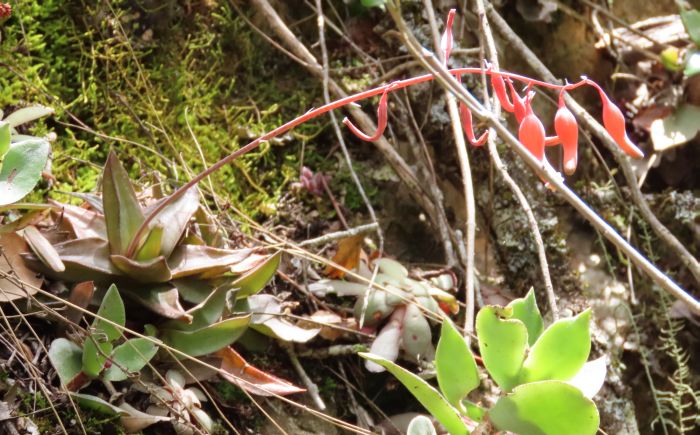
Fig. 1. Gasteria camillae in flower on a cliff ledge.
Description
Description
Plants with stems, initially single, proliferating from the base to form dense clusters of 5–12 heads. The clusters reaching up to 300 mm in diameter, 100–200 mm in height. The stems grow decumbent, up to 170 mm long and 7–10 mm in diameter. The roots are fibrous to semi-succulent, 0.5–2 mm in diameter. Rosettes each with 8–12 leaves, initially in an opposite (distichous) arrangement, becoming a rosette on mature stems, arranged in 5 vertical ranks or appearing imbricate. The leaves are leathery, succulent, brittle, drawn out spear-shaped (linear-lanceolate) to linear, 40–100 mm long, 10–15 mm broad at base, and with a distinct keel. The leaves are slightly sickle-shaped (falcate), initially ascending spreading, becoming recurved. The upper surface (adaxial side) channelled, sometimes plane towards the leaf end, with a matt, light grey-green colour, becoming reddish during the dry season. The leaves may also be occasionally mottled, the surface is smooth, the lower surface bearing an eccentric keel and the margins are entire or very shallowly tuberculate (usually rounded minute teeth), whitish to translucent, the leaf end is drawn to a sharp point (acuminate). The juvenile leaves are in an opposite row (distichous), shaped like a tongue (lorate), spread out to ascending and the leaf end blunt (obtuse) but ending in a sharp hard point (mucronate).
The inflorescence consists of a raceme about 200–470 mm long, bearing 5–11 pendent flowers on pendent flower stalks, all arranged in one plane (secund). The flower stalks (pedicels) are 7–9 mm long and the flowers are oblong, 30 mm long, the floral leaves (segments) the basal part swollen and inflated to 7 mm in diameter, the end part curved (and with a slight constriction), about 5 mm in diameter, orange-pink, with green striations. The stamens 28 mm long; anthers about 2 × 1 mm, included. The female portion (ovary) oblong, 6 × 3 mm, green ending in a style 15 mm long; the stigma minute, and included. The capsule and seeds are still unknown. Flowering time is late spring to early summer.
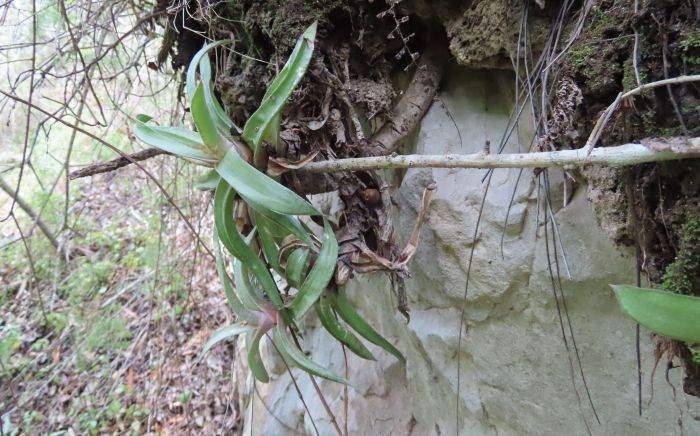
Fig. 2. Gasteria camillae in its native habitat on a sheer cliff in the Baviaankloof, Eastern Cape, South Africa. Note the greyish green leaves and stems.
Conservation Status
Status
Gasteria camillae, although rare and only known from 2 sites, is a typical cliff-dwelling plant growing on sheer, almost inaccessible cliffs and thus is difficult to reach, and very well protected by its habitat. Also, the site where Gasteria camillae was discovered, forms part of a larger nature reserve.
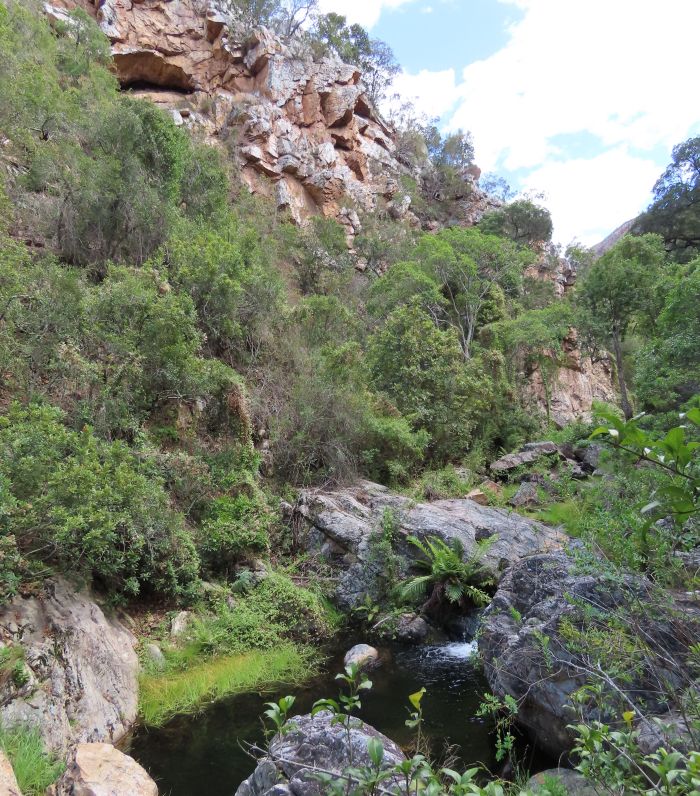
Fig. 3. The rugged terrain of the Baviaanskloof Mountains, habitat of G. camillae.
Distribution and habitat
Distribution description
Gasteria camillae is only known at present from 2 localities along the eastern Baviaanskloof. These include the deep, rocky ravines of 2 drainage systems. The plants were encountered on humus-rich ledges and in crevices, on steep, inaccessible cliffs, where they form clusters reaching 300 mm in diameter. The cliffs consist of quartzitic sandstone of the Peninsula Formation, which is part of the Table Mountain Group (Cape Supergroup). This rock formation gives rise to an acidic, mineral-poor, sandy soil (Mucina & Rutherford 2006: 63, 64). The plants grow at an altitude of about 300–400 m above sea level and were observed on most aspects, however, always in partial shade.
The vegetation in its habitat consists of Gamtoos Thicket vegetation which is part of the Albany Thicket Biome (Mucina & Rutherford 2006: 553–555), as well as with elements of Afromontane Forest, as well as Fynbos. Its cliff-dwelling habitat is shared with other succulents and bulbs such as Albuca bracteata, Aloe mitriformis, Curio ficoides, Litanthus pusillus (Drimia uniflora), Crassula perforata, C. lactea, C. cremnophila and Crassula orbicularis, Cyrtorchis arcuata, Bulbine latifolia and Cyrtanthus montanus.
Other non-succulent vegetation includes Afrocarpus falcatus, Podocarpus latifolius, Cunonia capensis, Curtisia dentata, Loxostylis alata and Smelophyllum capense. The climate in the region is semi-arid, however, in the protected kloofs where Gasteria camillae grows the rainfall is estimated at about 400–600 mm per annum. The average maximum temperature is about 26–28ºC and the average minimum about 8–10ºC. The climate is mild, but can become very hot on windless days in the summer. Winters are mild and frost is absent (Schulze 2009).
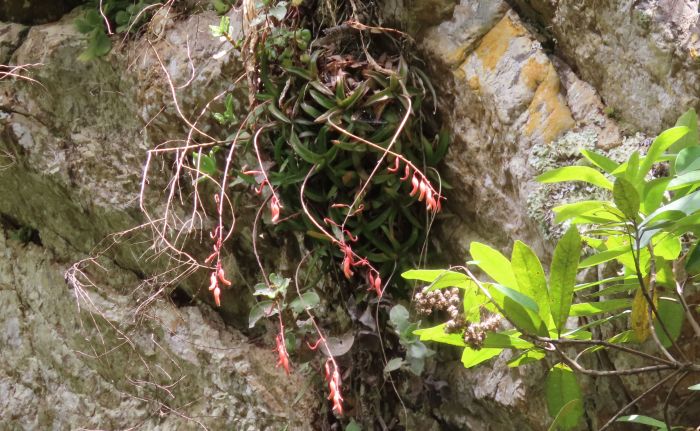
Fig. 4. Gasteria camillae plant flowering on a cliff face in the Baviaanskloof, E. Cape, South Africa.
Derivation of name and historical aspects
History
Gasteria camillae was recently named in Bradleya, the magazine of the British Cactus and Succulent Society (Van Jaarsveld & Molteno 2020). It is a very distinct species which was first observed and collected by Camilla Christie, a historical linguist at Rhodes University with an interest in Nama plant names. She collected her plants whilst on a mountain club walk. She has just finished a second MA in Linguistics at Rhodes University, which focused on Nama plant names used as loanwords by monolingual Afrikaans-speakers, hence her interest in botany, and especially in Namaqualand succulents. She is starting a PhD. in Linguistics at Rhodes next year, looking at historical contact between Afrikaans and Nama, with the focus on the featural diffusion of click consonants.
Of the presently known 30 Gasteria species endemic to southern Africa, just more than a third are associated with cliffs. Gasteria camillae is a cliff-hugger, with a tendency, with age, to develop hanging stems. The southeastern Cape is a centre of diversity for species of Gasteria and especially the Gamtoos River and its 3 main tributaries: the Kouga River drains the southern slopes of the Kouga Mountains, the Baviaanskloof River drains the Baviaanskloof Mountains as well as the northern slopes of the Kouga Mountains and finally, the Groot River drains the eastern parts of the Great Karoo. There are 7 Gasteria species associated with the Gamtoos system. These include G. camillae, G. rawlinsonii, G. pulchra (of the Baviaanskloof River), G. armstrongii (of the Gamtoos River), G. ellaphieae, G. glauca and G. glomerata (of the Kouga River). Of these only G. pulchra and G. armstrongii are not associated with cliffs.
Gasteria camillae is perhaps closest to G. glauca (Kouga River gasteria), but is separated immediately by its stems, which can grow to 170 mm long, and its smaller rosettes with smooth leaves (tuberculate in G. glauca). The only other cliff-dwelling Gasteria with noticeably long stems is G. rawlinsonii (Baviaanskloof cliff gasteria), which grows on deep vertical cliffs of the central and western Baviaanksloof Mountains. G. rawlinsonii has a different leaf colour and texture and flowers in spring.
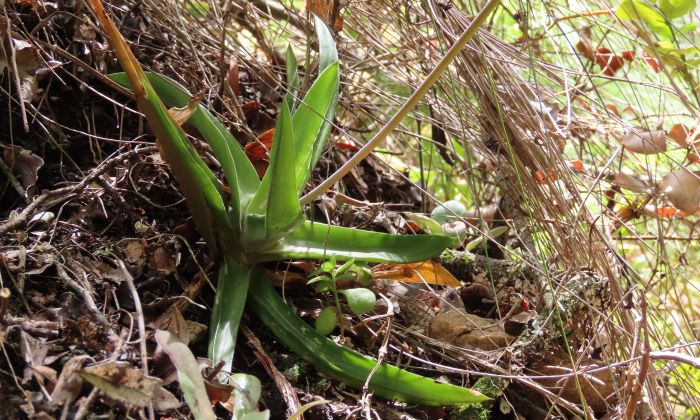
Fig. 5. Gasteria camillae in habitat on a cliff ledge.
Ecology
Ecology
As with most other species of Gasteria, the leaves of Gasteria camillae are very brittle and when becoming detached or fragmented from the mother plant, they will root, forming plantlets. This is an adaptation known as passive resistance. When a fragment falls to the ground or lands in a crevice, it will root (vegetative reproduction back-up). The greyish green leaves are also an adaptation to its semi-arid environment and this trait is shared by many other cliff-dwellers (Aloe mitriformis, Curio ficoides, C. muirii, C. pondoensis and C. talinoides, Crassula badspoortensis, Adromischus leucophyllus and Othonna capensis). The leaf colour reflects excessive sun, thus ensuring its long term survival. The succulent leaves enables the plant to endure long dry periods so typical of parts of the Eastern Cape. These become reddish during drought stress, caused by anthocyanins that slow down the process of photosynthesis. Its prolific nature produces many side branches, which will root and ensure a vegetative back-up.
The colourful reddish pink flowers attract sunbirds, which are the main pollinators of the plant. Although capsules and seeds have not been seen, it is likely that they resemble and function like other Gasteria species. With them, the capsules ripen in summer and are held in an erect position, only allowing strong winds to extract the flattened, winged seeds from their capsules, which are then dispersed by wind. Strong turbulent winds can scatter the seeds over a large area, those that fall in crevices in cliffs, have a greater chance of survival.
Uses
Use
It is not known whether this particular species is used medicinally.

Fig. 6. Gasteria camillae in the collection on Babylonstoren Farm, Simondium, Western Cape.
Growing Gasteria camillae
Grow
Gasteria camillae is a small decorative succulent best suited for containers on window sills or in greenhouses. Plants should also grow well in local thicket gardens on a well-drained, partially shaded site, such as a rockery or steep embankments. The soil should be well-drained, sandy and plants fed with an organic fertilizer or compost.
Plants can be propagated from leaf cuttings at any time of the year. Carefully remove a lower leaf, allow the wound to callus by placing it in a shady spot for 3 weeks, before planting. The leaf can be dusted with Sulphur which would guard against fungal infection. Let the leaf lie flat on the substrate, with the lower portion slightly covered by the growth medium. Rooting is rapid and should take place within a month or two, and young plants should appear from the leaf base in at least 6 months. Allow the young plants to grow strongly and once large enough to handle, the young plants can be transferred to individual containers.
Although seeds of this particular species have not been sown, the seed growth behaviour should be similar to other Gasteria species. Sow seeds in autumn or winter in a sandy medium. Cover with a thin layer of sand and keep moist. Germination is usually within 3 weeks. Allow plants to reach a size when they can be easily handled before planting out in individual containers.
References
- Boshoff, A., Cowling, R. & Kerley, G. 2001. Baviaanskloof. Veld & Flora 87(2): 74–77.
- Mucina, L. & Rutherford, M.C. (eds) 2006. The vegetation of South Africa, Lesotho and Swaziland. Strelitzia 19. South African National Biodiversity Institute, Pretoria.
- Tham, A.G. & Johnson, M.R. 2006. The Cape Supergroup. In: M.R. Johnson, C.R. Anhaeusser, C.R. & R.J. Thomas (eds.), The geology of South Africa. Geological Society of South Africa, Johannesburg/Council for Geoscience, Pretoria, 443–460.
- Van Jaarsveld, E. J. & Molteno, S. 2020. Gasteria camillae van Jaarsv. & Molteno, a new obligatory cliff-dwelling species from the Eastern Cape, South Africa. Bradleya 38:20–25.
- Van Jaarsveld, E.J. 1994. Gasterias of South Africa. A new revision of a major succulent group. Fernwood Press in association with the National Botanical Institute, Cape Town.
- Van Jaarsveld, E.J. 2007. The genus Gasteria, a synoptic review. Aloe 44, 4: 84–103
- Van Jaarsveld, E.J., Van Wyk, A.E. & Thomas, V. 2003. Gasteria glauca. Flowering Plants of Africa 58: 16–21. Plate 2184.
Credits
Ernst van Jaarsveld
Kirstenbosch National Botanical Garden (Retired 2015)
Babylonstoren Farm
Extraordinary senior lecturer and researcher,
Department of Biodiversity and Conservation, University of the Western Cape
June 2020
Plant Attributes:
Plant Type: Succulent
SA Distribution: Eastern Cape
Soil type: Sandy, Loam
Flowering season: Early Summer
PH: Acid
Flower colour: Red, Pink
Aspect: Shade, Morning Sun (Semi Shade), Afternoon Sun (Semi Shade)
Gardening skill: Easy
Special Features:
Horticultural zones









Rate this article
Article well written and informative
Rate this plant
Is this an interesting plant?
Login to add your Comment
Back to topNot registered yet? Click here to register.